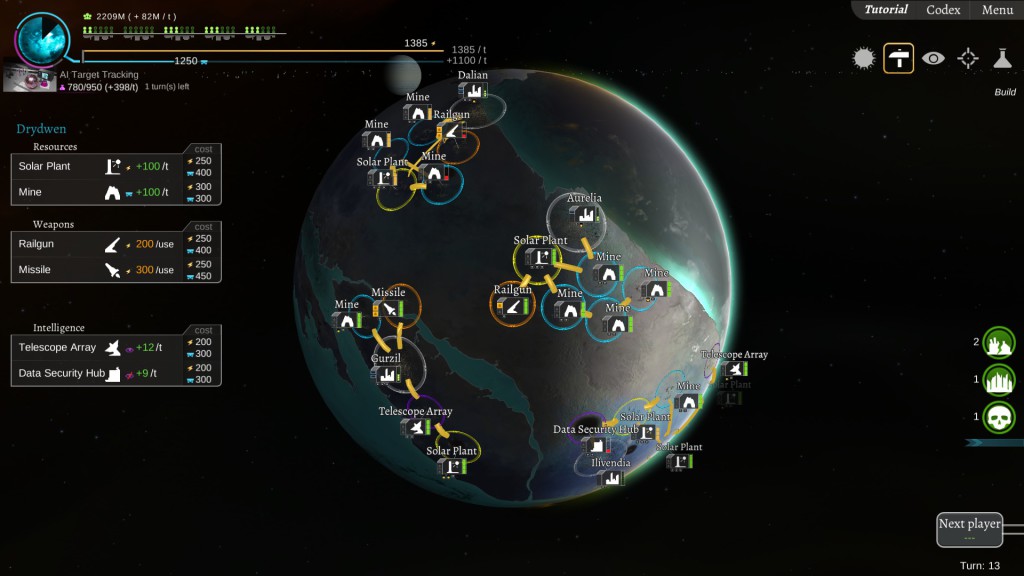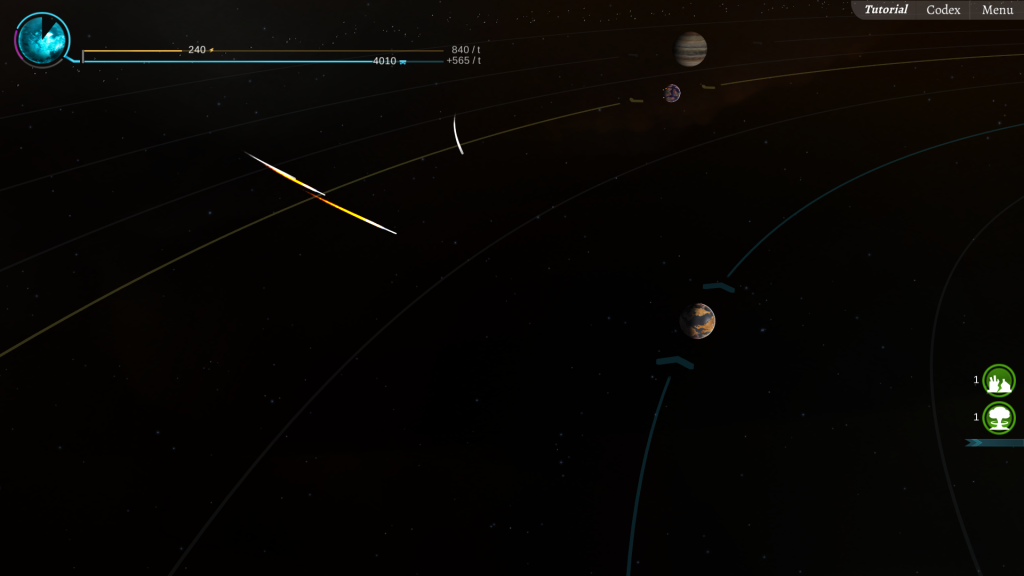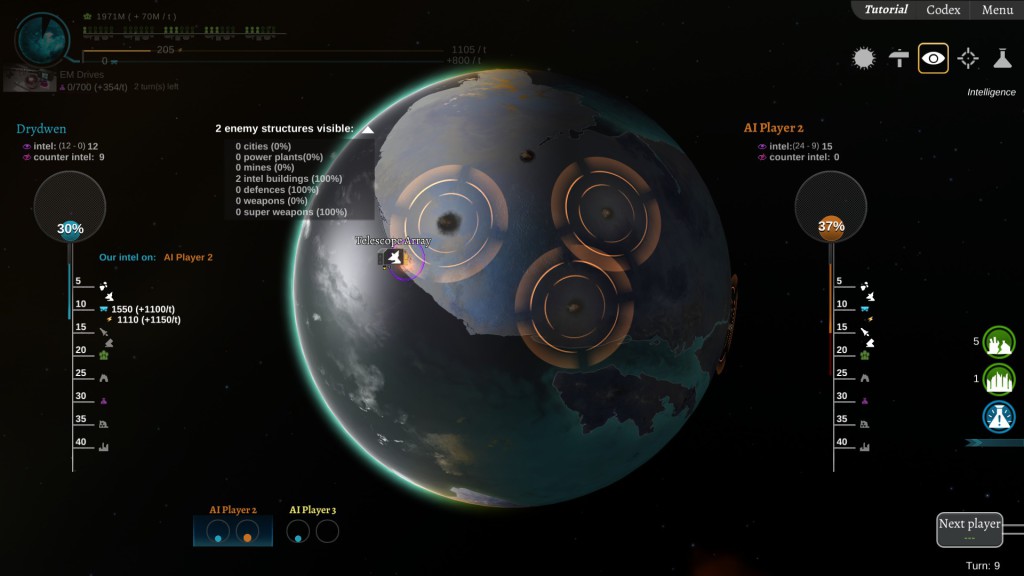
Developer: Team Jolly Roger
Publisher: Team Jolly Roger
Platforms: PC, Mac, Linux
Tested on: PC
Interplanetary – Review
Interplanetary, developed by Team Jolly Roger, left the cozy nest of Early Access and joined the vast array of turn-based strategy games on Steam. Over the span of two years, the game has received plenty of positive reactions as it continues to become larger with each update. Needless to say, this interplanetary battlefield has left us addicted.
Story
In a cosmos a few light years away from Earth, planetary civilization has begun a few hundred years ago. The once peaceful civilization of Fae was driven to madness when they realized that the resources provided by the planet they inhabited was no longer sufficient. Greed overcame them as they noticed other planets in the galaxy which could provide the resources they desired. The civilization of the sister planet of Fae found themselves in the same dire situation. Drastic measures were taken by both civilizations: the building of massive cannons aimed directly at each other, unaware of a third sister planet plotting to take out both planets once they have weakened each other’s defenses. And thus interplanetary warfare has begun.
One can never have enough imagination when it comes to interplanetary warfare, especially since Interplanetary has no storyline of honor – or anything for that matter – to back the cleverly developed gameplay up. And although the game has no narrative, it does excel in the interplanetary skirmishes, both offline and online, allowing the player to simply shrug at the lack of well-plotted threads.
Graphics
While the graphics may not quite reach the AAA standard, Interplanetary has successfully captured the mysterious abstractness that is space in visuals that are simply outstanding. Bright colored planets, each more distinctive than the previous one, are orbiting around the sun in a dark red galaxy.
The UI is simple yet effective and is mostly confined to the top and right side of the screen. This way the stunning visuals really stand out against those darker hued backdrops. Looking at an overview of a stunning cosmos has never been this fun as the game offers some great visuals effects whenever a planet is hit by enemy fire. All of this happens without suffering from any kind of framerate drop which is always a positive feature.
Sound
The instrumental ambiance sound of the game is equally fantastic, almost sounding as if it originated from space itself with that hint of military rhythm. In combination with the adrenaline-fueled gameplay, the music emphasizes one’s emotions – something movies tend to do as well. The music grows louder, more upbeat whenever all hell is about the break lose in the battlefield but it also grows calmer during the building phase which allows the adrenaline to fluctuate to lows and highs whenever it is needed. While this clever usage of ambiance sound is really subtle, it does allow the player to fully immerse themselves in the heated battle of interplanetary warfare.
Gameplay
Veterans will rarely need the tutorial but beginners will need to re-read the tutorial quite a few times in order to fully comprehend even the basics of gameplay. Of course, this also depends on what kind of feeling a player has with the genre but it is frustrating nonetheless so see the tutorial screen vanish while you weren’t quite done with it. With a tutorial this large, covering several sections by the means of tabs and scrolling, it is simply not useful to try and remember where you were.
Another large piece of information that accompanies the tutorial is the Codex which carefully explains each type of building and includes several useful statistics such as HP, stealth rating, firing energy cost, tech requirement and much more. The combination of the large tutorial and the incredibly detailed codex makes Interplanetary seem quite complex while in all honesty the game is deceptively simple – at least it can be once you understand the concept of interplanetary warfare.
The game offers two different modes: local and online mode. In the latter mode you’ll be battling against other players while the local mode allows you to battle both friends and AI-controlled planets. The AI’s do take quite some time to “calculate” their moves but they will never take an outrageous amount of time to do so. Both modes will offer you an incredible gameplay experience. A game setup is available for both modes, where you can fully alter the gameplay experience. The options range from general options such as turn time limits and the number of cities to universe options such as planet size and orbit directions to more advanced options where you can enable or disable specific buildings.
As Interplanetary is a turn-based strategy game, the game offers several key features which you will need to use to your own advantage, ensuring victory. In the first few turns you’ll be building and managing your planet’s infrastructure with limited resources. By building mines, nuclear plants and solar plants you’ll be able to gather more resources to expand your planet’s offense and defense. In the meantime, you can research and develop futuristic technologies each turn which will help you in the destruction of enemy planets in the long run. The tech-tree is incredibly large so it will take a while to know which type of tech is best for aggressive, offensive or defensive strategies.
Each turn has several views you can use to your advantage. An overview (F1) of the alignments of the planets comes first, followed by a building view (F2) where one can take a closer look at their own planet. There is no fixed rotation as to when you use certain views as you may switch any given time, except during the battle-phase. With certain technologies and buildings you can spy on your enemies to reveal their planets’ weak points. Detailed intel on planets can be found in the intelligence view (F3). Finally, there’s a targeting view (F4) which is much like the overview, except you’ll be aiming your artillery constructions such as the railguns and missiles to enemy planets. In this phase, you’ll need careful calculation to avoid other celestial bodies if they are not your intended target. You will also need to anticipate the gravity that will be at play as it can easily put your missile of course while figuring out where the planet will be due to orbit direction, orbit speed and the distance your missile will have to travel. Again, it sounds incredibly complex but this kind of aiming comes with practice. Lastly, you can find the tech tree view on F5. Of course, you don’t need to memorize which is which as each view is represented in the UI as a simple icon.
In short, Interplanetary is a great turn-based strategy game which combines key features such as resource management, offensive and defensive systems, research, technology and stealth in a well-executed gameplay experience.
Conclusion
Interplanetary can be harsh on beginners due to its fake complexity at the start. Once you’re done with being in awe with the large amount of information given to you, you’ll soon find out that the gameplay itself is fairly simple although it remains difficult to master. The visuals are stunning and the sound design kicks the incredible gameplay experience up by a notch or two. All-in-all, Interplanetary is a well executed galactic strategy game. Seriously, forget about the futuristic warfare that is Call of Duty and annihilate enemies through interplanetary warfare.
Interplanetary - Review,









No Comments